LIXIL makes pioneering water and housing products that solve everyday, real-life challenges, making better homes a reality for everyone, everywhere.
- Global Site
-
- English
- Japanese
- Brand Sites
Global
- Global Site
-
- English
- Japanese
- Brand Sites
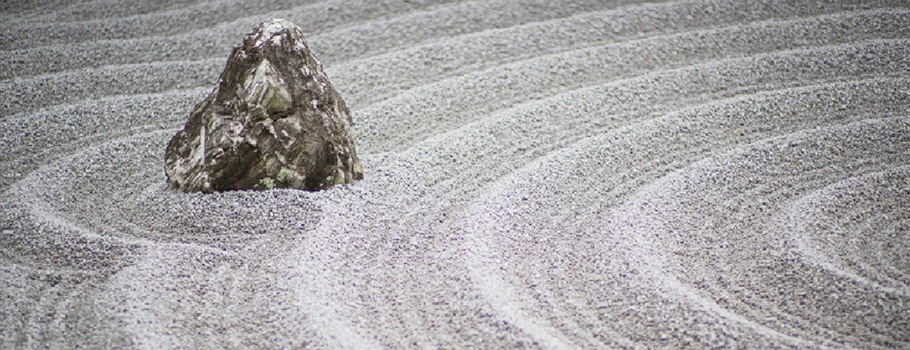
Updated:Dec 5, 2019
As a people, the Japanese have always had a close and symbiotic connection with water, a relationship that goes far beyond the use of this elemental liquid in everyday life. Even today, water purifies, heals and serves to recharge both body and mind.
And it is clear that many of the “rituals” that have evolved in Japan - a visitor to a shrine will rinse their hands and mouth before crossing the threshold; an “onsen” is a therapeutic pleasure; a daily bath serves to wash away the stresses of the day - can have far broader appeal.
Designs that Embody Japan's "Water Culture"
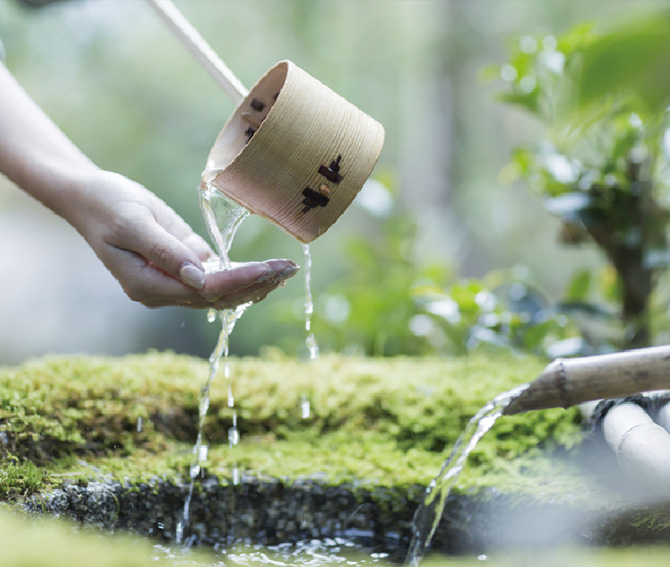 Designers at LIXIL, maker of pioneering water and housing products, have worked to combine traditional knowledge with cutting-edge technology in order to introduce Japan’s “water culture” to homes around the world.
Designers at LIXIL, maker of pioneering water and housing products, have worked to combine traditional knowledge with cutting-edge technology in order to introduce Japan’s “water culture” to homes around the world.
“We have embodied many of Japan’s rituals of water in the new INAX brand product lines,” said Yasuhiro Shirai, Vice President of Design for Lixil Water Technology.
“For example, Japanese people have learned that bathing in an 'onsen' can have a variety of healing effects on the body and soul,” he said. “In the same way, the design of INAX baths enables a person to completely relax.”
Similarly, the Shinto purification ritual of “taki-gyo” - by which a person cleanses their mind and soul by meditating under a mountain waterfall - can be replicated by standing beneath an INAX rainfall shower.
LIXIL has been manufacturing products for more than 100 years and has a reputation for innovation, although Shirai insists that the company’s in-house design studios - from Tokyo and Tokoname to London, New York, Dusseldorf and Singapore - must consistently meet the consumers ever-changing needs.
“The over-arching theme of LIXIL’s – including INAX’s - designs is ‘humanitecture’,” he said. “This means that our designs balance both architectural and human elements, ensuring that our products fit into their surrounding environment, while at the same time enhancing how people intuitively interact with the products.”
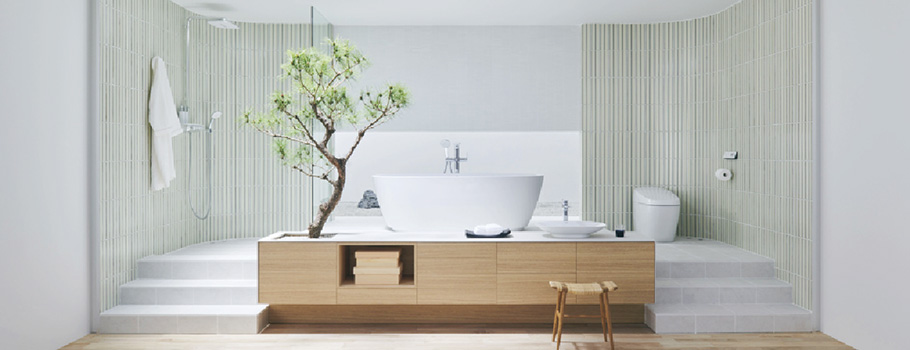
To complete that transition, LIXIL’s designers imbue each of the items that is made available to consumers with clearly defined design values and “signature elements.” These form the brand’s visual and emotional identity, says Shirai - its DNA.
Consumer Trends Beyond Our Own Industry
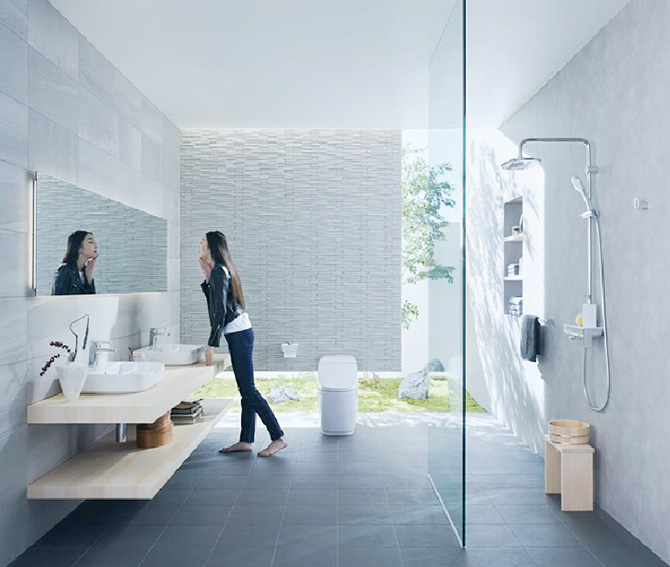 Paul Flowers, the company’s chief design officer, underlines that every item that goes from concept to product is inspired by consumer trends, including those beyond the interior construction industry.
Paul Flowers, the company’s chief design officer, underlines that every item that goes from concept to product is inspired by consumer trends, including those beyond the interior construction industry.
“It is important to understand how our customers live, their personal preferences and tastes, their cultures and even what their unarticulated needs are,” he said. “So whether we are designing shower toilets or filtered faucets, we look at everything that represents their lifestyle trends - from automotive to furniture, fashion to interiors .
“We refer to this as ‘presearch’ and it is an integral part of the design process that we have implemented across all of LIXIL’s brands to ensure that we make products that are both relevant and useful to their users.”
The company’s design teams around the world are tasked with constantly tracking trends in consumer behavior and integrating those findings so that new products are what the market is demanding as soon as they become available. This approach also ensures that products are “culturally rooted” in the markets in which they will be used.
One trend that has emerged in urban Asia, and elsewhere around the world, is the need to create healthy and comfortable living spaces in communities in which land and living areas are often at a premium. With limited space for buildings and a population that has expanded rapidly over the last 150 years, Japan has learned to make the most of small parcels of land, through the effective use of natural assets - such as water and sunlight - and never to waste scarce resources.
At LIXIL, that translates into environment-friendly products that are compact but, at the same time, functional and easy to use.
Fundamentally, Flowers adds, it’s about putting the consumer first. “A lot of companies today still design products based on what their competitors are making, always looking to stay one step ahead,” he said. “But if we did this, we wouldn’t be designing products that matter for our consumers. That’s why we decided to instead listen and study the behaviors of our consumers, gathering insights into the many things they truly value, enabling us to create products that matter.”
The Growing Presence of INAX Blue
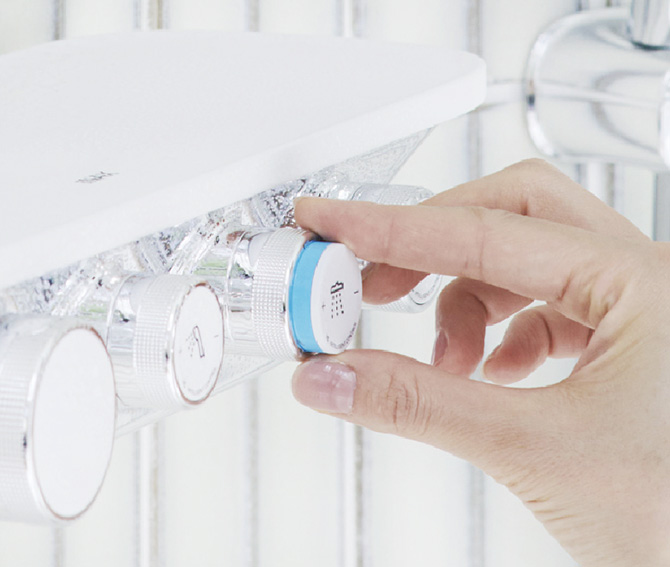 Flowers’ team has also broken new ground in the bathroom interiors sector by making a color synonymous with the brand. The approach has worked elsewhere - red-soled shoes are now identified as the work of the designer Christian Louboutin - and INAX Blue is designed to similarly convey the entire brand in a visual instant.
Flowers’ team has also broken new ground in the bathroom interiors sector by making a color synonymous with the brand. The approach has worked elsewhere - red-soled shoes are now identified as the work of the designer Christian Louboutin - and INAX Blue is designed to similarly convey the entire brand in a visual instant.
“However, the integration of INAX Blue in our products is more than just an aesthetical branding tool,” Flowers points out. “We use it to indicate when a function is activated, immediately drawing the attention of the user and making the product intuitive to use.”
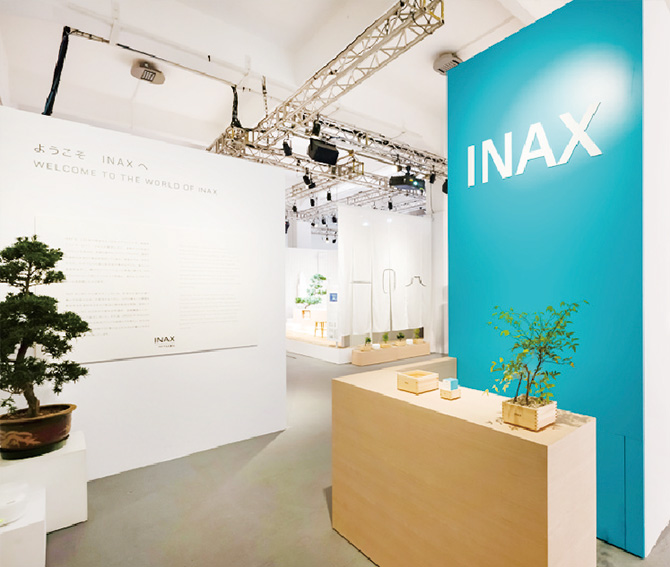 INAX displayed its most recent collections at Milan Design Week in April and emphasized the way in which Japan’s rituals of water have been incorporated into the design of its bathroom ranges. Its new collections, however, will be rolled out starting in Asia, where Japanese brands and lifestyle products already enjoy a firm following. Consumers in countries such as China, Vietnam and Thailand - where there are growing numbers of people who have a disposable income and fall into the “middle class” or “wealthy” brackets - are particularly keen to have a better experience in their bathrooms.
INAX displayed its most recent collections at Milan Design Week in April and emphasized the way in which Japan’s rituals of water have been incorporated into the design of its bathroom ranges. Its new collections, however, will be rolled out starting in Asia, where Japanese brands and lifestyle products already enjoy a firm following. Consumers in countries such as China, Vietnam and Thailand - where there are growing numbers of people who have a disposable income and fall into the “middle class” or “wealthy” brackets - are particularly keen to have a better experience in their bathrooms.
Research indicates that this segment of the world’s population with sufficient spending power to invest in small luxuries is growing. A study by The Brookings Institution released in September 2018 concluded that for the first time in recorded human history, more than 50 percent of the world’s population - some 3.8 billion people - can be considered middle class or wealthy. And these are the people that like what they see in INAX products.
“I believe INAX has immense potential outside of Japan,” said Flowers. “It is a brand that embodies the rituals of water that are deeply rooted in Japanese culture, but also relevant and valued throughout the world.”
Our Stories
- Backing People and Passions to Drive Innovation
- How Toilets in Schools are Catalyzing Change in Communities
- Building the Future by Recycling the Past
- Reinventing Consumer Connections in the World's Largest E-commerce Market
- Tackling Household Water Inefficiency in a Water-Stressed World
- Plugging the Plumber Shortage
- Pioneering Solutions to a Sewage Crisis in Rural Alabama
- Meet the Citizen Developers Changing How We Work
- Design and Brand Identity Transformation at LIXIL
- Three Changes to Prepare Europe’s Sanitary Industry for Growth
- Three Steps to Creating an Inclusive Culture
- From Linear to Circular: Giving Products in Your Home a New Lease of Life
- Crafting Unique Experiences as well as Products
- GROHE X: A Digital Brand Experience
- Design-led Innovation Delivering True Value
- Responsible Use of Plastics
- Empowering our People for an Agile Future
- Turning the Waves of Change into Opportunities
- SATO Tap: a New Handwashing Solution for All
- New Ways of Working Take Flight at LIXIL
- INAX: Rituals of Water
- Refreshing our sanitation targets, standing firm on our commitments
- Developing Attractive and Differentiated Products
- Conserving Water: The New Normal
- Insulating For a Warmer and Healthier Home
- Open Kitchen, Open Communication
- Tackling Open Defecation in India
- Shaping the Future of Faucets, One 3D Layer at a Time
- Bathed in Culture and Tradition
- Remodeling the Housing Market
- LIXIL's AQUA CERAMIC makes bathroom stains a thing of the past
- The Technology of Water
- Tackling Challenges in Global Sanitation and Hygiene
